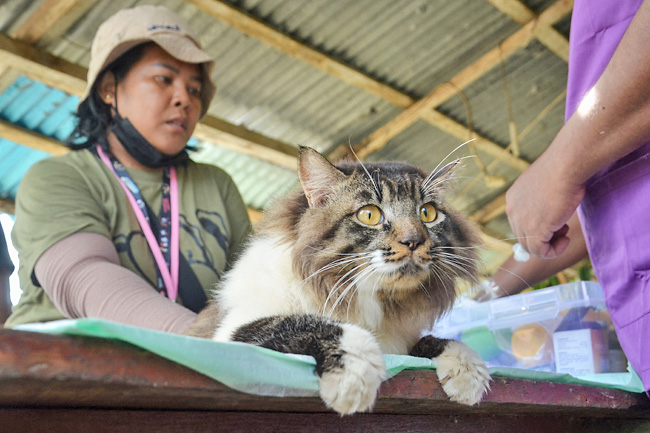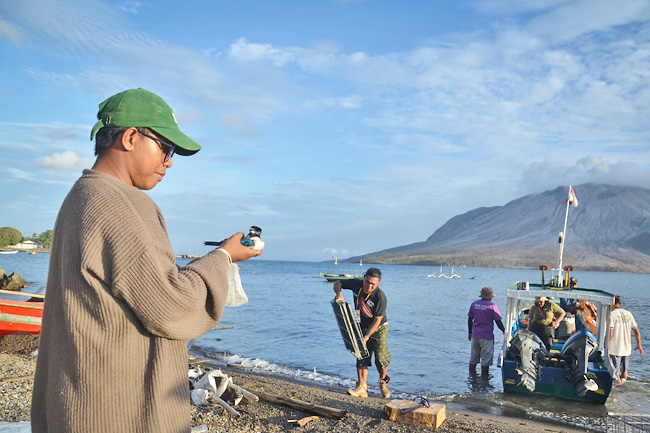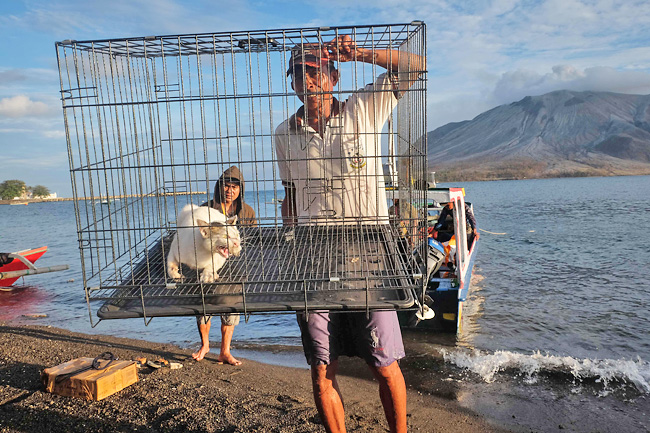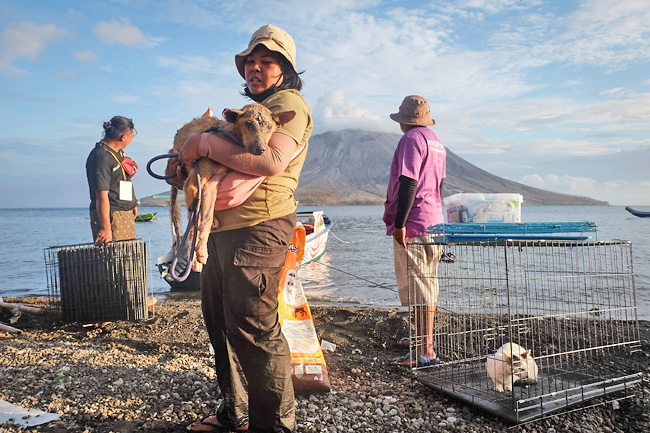TAGULANDANG (AFP) – An Indonesian volunteer returns from a dangerous rescue mission to a remote island where a volcano recently unleashed huge eruptions, cradling an abandoned, emaciated dog covered in burn blisters.
Mount Ruang in Indonesia’s northernmost region has erupted more than half a dozen times since April 16, stirring a spectacular mix of ash, lava and lightning that forced the island’s residents to be permanently relocated and thousands more evacuated.
But while locals have fled, a team of volunteers travelled to Ruang by boat on daring rescue missions to save abandoned pets from the foot of the volcano that remains at its highest alert level.
“We know that they (the animals) are still living there. How come we let them die while we know they are still alive there?” 31-year-old volunteer Laurent Tan told AFP on Saturday.
Laurent, the owner of two animal shelters in North Sulawesi province capital Manado, is one of eight volunteers who have made the six-hour ferry journey several times to Ruang’s neighbouring Tagulandang island following the eruptions.
On one of their missions to the island’s ash-covered homes, they retrieved an unnamed pup, a white cat, and a bright turquoise-and-white tropical bird.
The dog, a female with burns on her face and body, was brought to a makeshift shelter on Tagulandang, where a veterinarian treated her on a wooden desk while a volunteer held up a mobile phone flashlight.




She appeared to have survived the eruptions by taking shelter in a large gutter. The surrounding village above ground had been destroyed, Laurent said.
The group, made of volunteers from animal welfare organisations, deployed for a second time on Friday after some pet owners made desperate social media appeals for them to evacuate their pets, and has since rescued “a lot” of animals, she added.
An AFP journalist at the scene said more than a dozen animals had been rescued since Friday.
Some owners had learned their pets were still alive after seeing them in pictures of Ruang island in the media.
Authorities had told locals to evacuate outside a seven-kilometre exclusion zone around the crater, which was lowered to five kilometres on Sunday, with around 11,000 people earmarked for evacuation.
As of Saturday, more than 5,000 people from Tagulandang had been evacuated, the national disaster mitigation agency said Sunday, while all of Ruang’s residents – more than 800 – had been taken for permanent relocation.
Authorities had warned of potential flying rocks, lava flows and tsunamis due to debris sliding into the sea. But despite the risk, the volunteers were getting to work.
One climbed over the fence of an abandoned house to rescue several dogs left behind by their owner, before handing them over to vet Hendrikus Hermawan. Hendrikus said the owner had asked the volunteers for help rescuing the dogs, which included a five-month-old puppy.
Many of the rescued animals appeared hungry and stressed after their owners left them, he told AFP.
“The first treatment we do here is give food and additional vitamins to relieve their stress,” he said, adding that the animals could survive as long as they were nourished.
The volunteers aim to rescue all the dogs, cats and birds threatened by the volcano, bring them to Manado and reunite them with any original owners, said Laurent.
While the initial focus of the eruptions was on the human impact, the volunteer said animals should not be forgotten.


